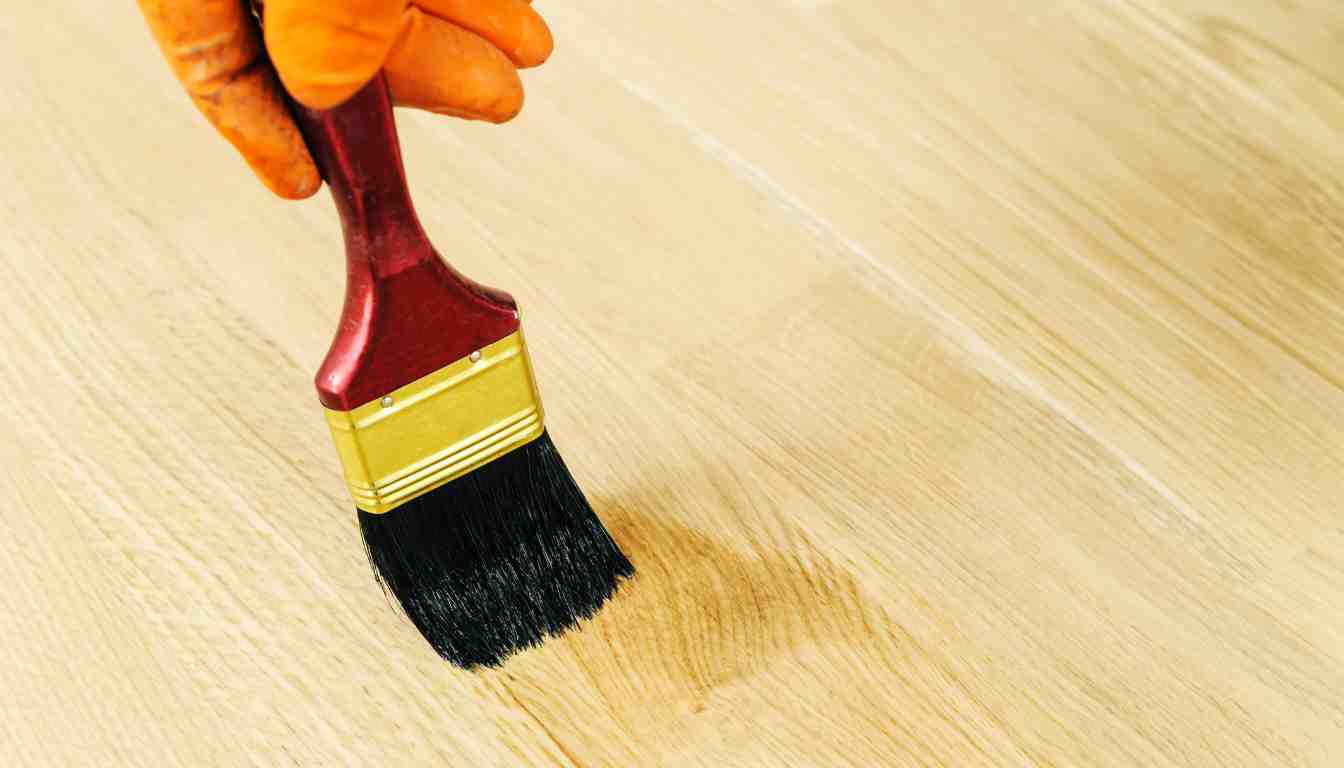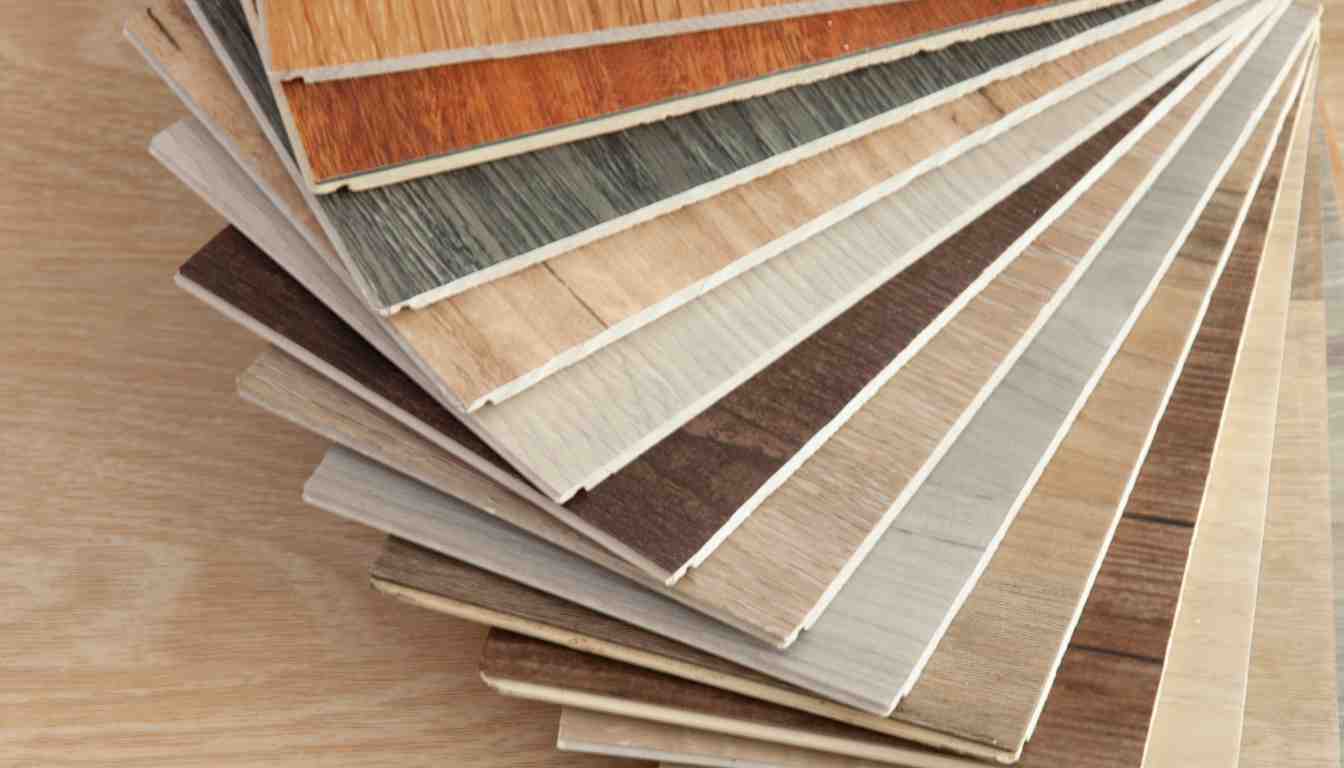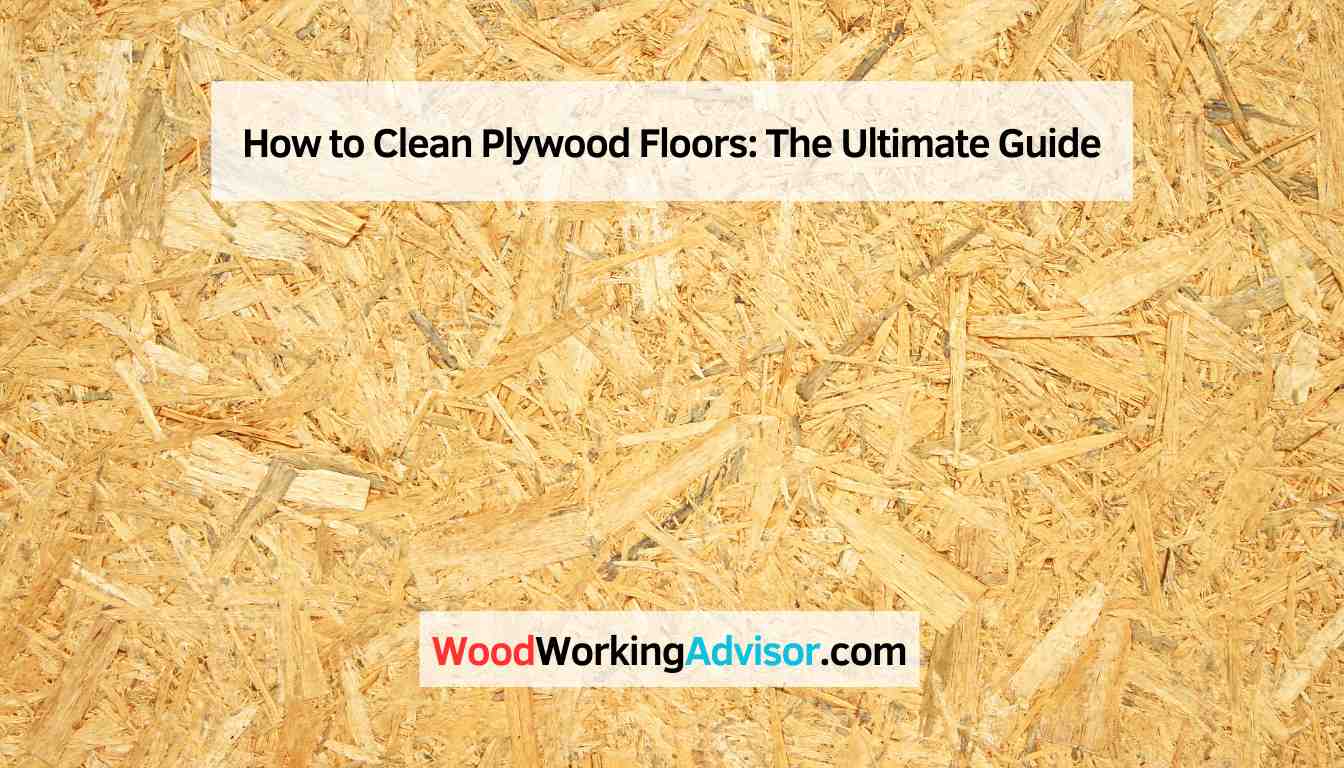To clean plywood floors, start by sweeping or vacuuming the surface to remove any dirt and debris. Then, use a damp mop or cloth with a mild soap and water solution to gently clean the floors, being careful not to soak them.
One of the advantages of plywood floors is their durability and easy maintenance. However, even though plywood can withstand wear and tear, regular cleaning is essential to keep them looking their best. We will explain in simple steps how to clean plywood floors effectively.
By following these instructions, you will be able to maintain the cleanliness and shine of your plywood floors, enhancing their lifespan and overall appearance.
Preparing For Cleaning
Preparing for cleaning plywood floors is essential to ensure a thorough and effective cleaning process. By following the right steps and using suitable cleaning products, you can remove dirt and grime without damaging the plywood’s surface, leaving your floors clean and well-maintained.
Plywood floors add a natural and warm charm to any home. However, just like any other type of flooring, they require regular cleaning to maintain their beauty and durability. Before starting the cleaning process, it is important to properly prepare your plywood floors. This step ensures that you can clean your floors effectively without causing any damage. In this section, we will guide you through the necessary steps to prepare for cleaning your plywood floors.
Clearing The Area
The first step in preparing for cleaning your plywood floors is to clear the area of any obstacles. Remove all furniture, rugs, and any other items that may obstruct the cleaning process. This will give you ample space to work and ensure that you can clean every inch of the floor. Clearing the area not only makes the cleaning process easier but also prevents any accidental damage to your prized possessions.
Checking For Damage
Before you begin cleaning your plywood floors, take a few moments to inspect them for any signs of damage. Look out for scratches, cracks, or loose boards. Checking for damage allows you to address any issues before they worsen during the cleaning process. If you notice any major damage, it is advisable to contact a professional to ensure proper repairs are made. By addressing damage beforehand, you can prevent further harm to your plywood floors and maintain their longevity.
Once you have cleared the area and checked for damage, you are well-prepared to clean your plywood floors. Following these preparation steps will ensure that your cleaning process is efficient and effective, without causing any additional harm to your beautiful floors.

Types Of Plywood Floors
When it comes to choosing the right flooring for your space, plywood is a practical and cost-effective option. Plywood floors are versatile and durable, making them suitable for both commercial and residential use. There are two main types of plywood floors: natural plywood and finished plywood.
Natural Plywood
Natural plywood floors are known for their rustic and organic appearance. They are made from thin layers of wood veneer glued together, creating a strong and stable surface. These floors showcase the natural grain and color variations of the wood, providing a warm and inviting atmosphere to any room.
One of the advantages of natural plywood floors is their affordability. They are generally less expensive than finished plywood floors, making them a popular choice for budget-conscious individuals. Additionally, natural plywood floors are easy to install and maintain, making them suitable for DIY enthusiasts.
However, it is important to note that natural plywood floors require sealing and finishing to protect them from moisture and wear. Without proper sealing, the wood can be prone to damage and warping over time. It is essential to apply a high-quality sealant and finish to ensure the longevity of your natural plywood floors.
Finished Plywood
Finished plywood floors offer a more polished and refined look compared to natural plywood floors. They come pre-finished with a protective top coat, providing added durability and resistance to stains, scratches, and moisture. These floors are available in a wide range of finishes, including glossy, matte, and satin options, allowing you to choose the one that best suits your aesthetic preferences.
One of the main advantages of finished plywood floors is their ready-to-install nature. They do not require any additional sealing or finishing, making them a convenient choice for those who want a hassle-free flooring solution. The protective top coat of finished plywood floors not only enhances their durability but also makes them easier to clean and maintain.
Finished plywood floors are a popular choice for high-traffic areas such as hallways, living rooms, and kitchens, where durability and ease of maintenance are crucial. They provide a sleek and polished look that complements both modern and traditional interior designs.
Cleaning Techniques
Maintain the beauty of your plywood floors with these effective cleaning techniques. Remove dirt and grime using gentle solutions and a soft mop, avoiding any harsh chemicals or excessive water. Keep your floors looking their best with regular sweeping and periodic deep cleaning.
Keeping your plywood floors clean is essential to maintaining their beauty and longevity. By following the right cleaning techniques, you can ensure that your floors stay looking their best for years to come. In this section, we will discuss three effective methods for cleaning plywood floors: sweeping and vacuuming, mopping with a mild solution, and spot cleaning stains. Let’s dive in and discover the steps for each method.
Sweeping And Vacuuming
Regularly sweeping or vacuuming your plywood floors is crucial for removing loose dirt, dust, and debris that can cause scratches or damage over time. Here are the steps to effectively sweep or vacuum your floors:
- Beginsweeping or vacuuming from one corner of the room, working your way towards the exit. This way, you won’t track dirt back onto already cleaned areas.
- Use a soft-bristled broom or a vacuum cleaner with a hardwood floor attachment to avoid scratching the plywood surface.
- Work in gentle, overlapping motions to ensure that all dirt and debris are thoroughly removed.
- Pay special attention to crevices and corners, as they tend to accumulate more dust.
- Once you have finished sweeping or vacuuming, dispose of the collected dirt and debris properly.
Mopping With A Mild Solution
Mopping your plywood floors with a mild solution is an excellent way to achieve a deeper clean. Follow these steps for a successful mopping session:
- Start by thoroughly sweeping or vacuuming the floor to remove any loose dirt and debris.
- Fill a bucket with warm water and add a few drops of a gentle, pH-neutral cleaner suitable for hardwood floors.
- Dip a mop into the solution and wring it out until it is only slightly damp. Excess water can cause damage to the plywood.
- Begin mopping the floor, starting from one end and working your way towards the exit. Ensure that the mop is always in contact with the floor surface.
- Remember to mop in the direction of the plywood grains to prevent streaks and achieve a more thorough clean.
- If the mop becomes too dirty, rinse it out in the solution and wring it out before continuing.
- Once you have finished mopping, allow the floor to air dry before walking on it. Avoid using excess water, as it can seep into the plywood and cause damage.
Spot Cleaning Stains
Accidents happen, and when they do, it’s essential to address stains on your plywood floors promptly. Follow these steps to effectively spot clean stains:
- Identify the type of stain you are dealing with, as different stains may require specific cleaning methods.
- If it’s a liquid spill, use a clean, absorbent cloth to blot and absorb the excess moisture. Avoid rubbing, as it may spread the stain or damage the plywood.
- Gently scrub the stained area with a soft cloth or sponge dampened with warm water and a mild cleanser suitable for wooden surfaces.
- Rinse the area with plain water and blot it dry with a clean, dry cloth. Ensure that no excess moisture remains on the floor.
- If the stain persists, consider using a specialized wood floor cleaner or contacting a professional for advice.
Now that you know the cleaning techniques for maintaining your plywood floors, you can keep them looking their best with ease. Remember to sweep or vacuum regularly, mop with a mild solution, and address stains promptly to preserve the beauty of your plywood floors for years to come.

Additional Maintenance Tips
Keeping your plywood floors clean is essential for maintaining their beauty and longevity. In addition to regular cleaning, there are a few additional maintenance tips you should follow to ensure your plywood floors stay in optimal condition. Read on to discover some helpful techniques!
Regular Dusting
Daily dusting is important to prevent dirt and debris from scratching your plywood floors. Dust particles can act like sandpaper, gradually wearing down the finish of your floors. Fortunately, regular dusting is a simple and effective way to prevent this damage.
To make the dusting process easier, use a soft microfiber mop or cloth. These materials are gentle on your floors and collect dust without leaving behind any residue. Simply sweep the mop or cloth over the surface of your plywood floors, paying extra attention to high-traffic areas.
Avoiding Water Damage
Water is one of the biggest enemies of plywood floors, as it can cause warping, staining, and even mold growth. To protect your floors, it’s crucial to avoid excessive moisture and clean up any spills immediately. Using a dry mop or towel, blot away any liquid to prevent it from seeping into the plywood.
Additionally, be cautious when mopping your plywood floors. Instead of saturating the mop with water, dampen it slightly and wring out any excess moisture. This way, you can effectively clean your floors without risking water damage.
Applying Protective Coatings
Applying a protective coating to your plywood floors can significantly extend their lifespan and enhance their appearance. A coat of polyurethane or a similar sealant not only provides a barrier against scratches and spills but also adds a lustrous finish to your floors.
Before applying any protective coating, ensure your floors are clean and free of dust or debris. Carefully follow the instructions provided by the manufacturer, and apply the coating using a brush or roller. Allow sufficient drying time before using the floors again.
Regularly inspect your floors and reapply the protective coating as needed to maintain its effectiveness. This simple step can go a long way in preserving the beauty and durability of your plywood floors.
Conclusion
To wrap up, keeping your plywood floors clean is essential for maintaining their beauty and longevity. By following the simple steps outlined in this guide, you can effectively remove dirt, stains, and grime from your floors. Remember to sweep regularly, use gentle cleaning solutions, and avoid excessive water.
Additionally, taking preventive measures like using rugs and furniture pads can help protect your floors from scratches and dents. So, go ahead and give your plywood floors the care they deserve, and enjoy their natural charm for years to come!


